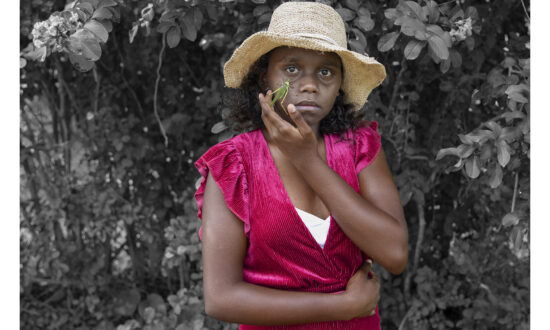The pair settled in Stepney four years ago, having decided to move down to the suburbs after more than a decade spread across their home and studio in Uraidla and Pedler’s ceramic workshop in Moonta. After 29 years together, consolidating their life and practices required a special kind of space.
“We needed light industrial to do what we do, so it was kind of perfect,” he says of their home and workshop, which are spread across two buildings on the same property. “It had everything: a house, a place to work, and a garden.”
“This is the first time we’ve actually had the ceramics and the glass on the same premises,” Caslake says. “We’ve always tried to keep it separate because with glass and clay, they don’t actually mix.”
In this former chocolate factory, they found a space – and adjoining home – that seemed perfectly moulded to their creative needs and lifestyle. “It means there are sinks everywhere, there’s three-phase power everywhere, gas lines, air conditioning in every room,” Pedler says. “It was all there – we were really lucky.”
“And double-brick,” Caslake adds. “It was purpose built for a chocolate factory, to keep everything cool.”

The furnace is the heart of the Caslake and Pedler studio operation. Photo: Aubrey Jonsson
Which leads us to the burning heart of the operation, a furnace they call “Don”.
“It’s had many lives, it’s sort of evolved – like grandpa’s axe, as they say,” Caslake explains.
 “When we built it up in the hills, the first time we fired it was the day Don Dunstan died, which was a sad day,” she says, noting the impact the former premier had on their work through the establishment of JamFactory, among other initiatives. “So we called it Don – then it became Donna for a while because it had a rebuild.”
“When we built it up in the hills, the first time we fired it was the day Don Dunstan died, which was a sad day,” she says, noting the impact the former premier had on their work through the establishment of JamFactory, among other initiatives. “So we called it Don – then it became Donna for a while because it had a rebuild.”
Living on site allows the pair to bunker down for marathon 10-day sessions of non-stop work when the furnace is lit.
“We’ll turn it on, slowly heat it up, work for 10 days, and then turn it off and process the work,” Pedler explains. “That keeps the costs down, because it’s quite expensive to run. We have to live on the worksite, because we load the furnace at midnight and check it constantly and you just have to be around.”
“And it’s all-consuming, and very intense,” Caslake adds.
“Once you’re in that cycle of getting up at 6 o’clock in the morning to start emptying the kilns, and your last load was at midnight, you’re in that cycle, plus you’re working that whole day.”

David Pedler with some of his ceramic works in the studio. Photo: Aubrey Jonsson

Coloured Clouds: The sea, surf and beach lifestyle is the inspiration for the pair’s range of waves, clouds, shells and sea bowls. Photo: Aubrey Jonsson
To take the edge off the work, Pedler has kept busy surrounding their work and living spaces with greenery, from a front yard teeming with lemon trees, horseradish, spinach and broccoli to the grapevine and banana-tree-lined driveway, where the pair receive shipments of glass a tonne at a time.
“This was apparently a beautiful market garden and house before the factory went up in the back,” Caslake says. “The neighbours have said it was all fruit trees and vegetables; they grew all their own food.”
Today, the garden looks like it could go a long way to sustaining the pair during one of those long weeks spent at Don’s side. But they’ve also taken care to provide a little ecosystem for local wildlife to call home – a reversal of a prevailing trend of carving up old suburban blocks and big rambling gardens to create yardless townhouses.
“We want to be a wildlife-friendly place,” Pedler says. “We feed the birds – every morning there’s magpies, cockatoos, topknot pigeons – and have lizards in the garden.”
“That’s pretty good in four years,” Caslake says. “We’re thrilled.”
It seems Caslake and Pedler have found the sweet spot – even without the chocolate.

Meg Caslake and ceramicist David Pedler have worked to make their place wildlife-friendly. Photo: Aubrey Jonsson
You can read more about Meg Caslake and David Pedler’s practice and see examples of their glass and ceramic works on their website.
In the Studio is a regular series presented by InReview in partnership with not-for-profit organisation Guildhouse. The series shares interesting stories about South Australian visual artists, craftspeople and designers, offering insight into their artistic practices and a behind-the-scenes look at their studios or work spaces. Read our previous stories here.
Support local arts journalism
Your support will help us continue the important work of InReview in publishing free professional journalism that celebrates, interrogates and amplifies arts and culture in South Australia.
Donate Here




